Featured Articles
Joe
Stillman’s Gym, 1947. Rocky Graziano was cutting figure eights in front of a drumming speed bag with a Chesterfield perched on his lip. It was lit, but that was damn-near expected at smoky Stillman’s—it was damn-near appreciated too, given the stench the joint was famous for. An eleven-year-old boy sauntered up to the fighter wearing a matching sneer. His name was Joe Rein and he was playing hooky. After a while, Graziano looked down.
“Why ain’t you in school?” he said.
“—Why ain’t you!”
Graziano, Joe recalled, “roared with laughter” and hoisted him up on his shoulders. He was introduced to a gallery of kings and contenders, and before the stars were out of his eyes he was on a first-name basis with all of them.
Jake LaMotta was introduced to him by Willie Pep. “Kid, you have hands like mine,” LaMotta said. “You gotta learn to go to the body.” Small-handed and short-armed Joe was taught to slip rights and lefts on both sides to land unexpected counters. “Most fighters are predictable,” LaMotta said.
Some of what Joe learned was anything but predictable. Gym wisdom warns against crossing your feet in the ring though Sugar Ray Robinson himself told him that was a myth. Fighters “should cross their feet sometimes,” he said, “to move more easily.” Robinson also showed him a trick to maximize the power of the left hook. He positioned the kid, who was a right-hander, into the southpaw position to throw a right hook, doubling it up to the body and head. He instructed him to throw his left hook the same way, “as it comes,” and not to worry about it being textbook. His own left hook was really a half-uppercut, Robinson said, and a slow motion YouTube review of just what it was that tipped over Gene Fullmer affirms it.
Joe “Old Bones” Brown kept the wolves away. When managers came around looking for meat to feed their prospects, Brown wouldn’t let the kid in the ring. “He wouldn’t let me get smashed at Stillman’s,” said Joe. Brown thus did a favor to posterity; he helped preserve the golden memory of someone destined to become the golden era’s greatest ambassador in the 21st century.
Sixty-six years after he was introduced to the greatest fighters who ever lived, Joe was logging-on and introducing them to a generation of fans whose parents weren’t even born in 1947 and who lived thousands of miles from the site of long-gone Stillman’s Gym. Joe was a regular on eastsideboxing.com’s forums since August 2004. He posted 5,919 times under the name of a movie star from way back named “John Garfield.”
It was no idle choice. Garfield, born in New York City, was a corner kid who found refuge in boxing and friends in low places. He made his bones in local theatre troupes, moved to Hollywood, and took New York with him. In other words, he never went soft. Garfield reached his peak of fame during the Red Scare and was called to testify before the House Committee on Un-American Activities in 1951. He refused to name names and his career took a dive because of it. Joe idolized Garfield for this working class loyalty, for that old-school cool.
In 1952, Joe was fifteen and feeling it. “Makes me cringe at whatta A-hole I mustta looked like, Springs,” he said. “Amboy Dukes to my toes, DA haircut, Tony Curtis spit curl; high rise, chartreuse pegged pants (12-inch cuffs, 32-inch knees —think MC Hammer), saddle stitching, and pistol pockets. I walked two blocks before my legs moved!”
John Garfield had a fatal heart attack on May 21st 1952 and was buried twenty miles north of the city in Westchester Hills. But Joe wouldn’t let him die.
He sent me a publicity shot of himself doing his best Garfield impression in 1958 and another altogether different one in a gym in the 1970s. “You’re Lon Chaney,” I quipped about his different looks. He replied: “In ’60, Springs, I worked on a low-budget anti-Castro feature in Florida with Lon Chaney, Jr. and Jake LaMotta. Chaney was such a falling-down drunk, he never left the set after a day’s shoot, just collapsed in bushes with a bottle, and that’s the way we found him the next morning.” I thought that was something until he told me he was flashed by Jane Wyatt of “Father Knows Best” fame. The first time I watched Blast of Silence (1961), an obscure film noir by fellow Brooklynite and Rein-look-a-like Allen Baron, I called him up excitedly. Joe must have thought I was cute. “I worked on that film!” he said and reduced me yet again to stunned silence. Another time I told him I was a sucker for easy-listening music and Ed Ames’ “My Cup Runneth Over.” His response? “Studied with Ed at the John Cassavetes Theater workshop in New York in the early 60s.”
Joe was never boastful, never a name-dropper; and, like his idol, he never compromised a trust. He would share stories matter-of-factly and at times with a twinkle in his eye because he knew they were sure to entertain.
Entertainment was on his mind when he moved out to Los Angeles in the 1970s. Like Garfield, he took New York with him. He produced commercials for an advertisement agency, taught writing classes at UCLA, and kept his hand in boxing. He was a fixture at the Wild Card Gym and wrote fly-on-the-wall articles for The Sweet Science that are classics. He sat ringside for Manny Pacquiao’s debut at the MGM Grand in 2001 and became one of his earliest American believers. By his own admission, he “needed Cruise shoes to be taller than Manny” but he became for him what he was for so many others —an encourager. Ten years later, Joe had been diagnosed with cancer and didn’t get around much anymore. Pacquiao found out and reached in to ask him to sit ringside at Pacquiao-Marquez III, again at the MGM Grand. “There are a million people banging on his door,” Joe said. “It’s just amazing.”
Joe always could spot talent. “You’ve got the goods,” he’d say. When he said it to me in 2009, I listened. I sat down and typed an essay spurred more by his confidence than my own, and sent it to him. He took it like it was the start of something grand and brought it to Michael Woods, editor-in-chief of TheSweetScience, and with that, my life got better. The second boxing essay I wrote was a tribute to my new friend’s golden memories. I called it “1949: The Perfect Storm of Pugilism.” I should have called it “A Love Letter to Joe Rein.”
My encourager never let up. “Words are precious to me,” he would say, and barring a hospital stay, he never failed to call or email within hours after my latest essay was published. I grew to rely on it. I went and bought a vintage desk phone just to hear him better when he called. “You rolled-up-sleeves ‘n settled for nothing but your best,” he’d tell me. When I wrote “The Fourth God of War” I told him that my choice for background music was “The Summer of ’42” on a loop. Joe wrote back: “‘The Summer of ’42’ has special meaning for me: The author, Herman Raucher, was my youth-camp counselor in ’47.” I threw up my hands. The last fight I covered thrilled him (“like a Friday night in the 40s when Graziano headlined the ol’ MSG… Bless you!”), which thrilled me.
He was the consigliere in my ear for every major decision I’ve made over the past five years. Despite being housebound, Joe was a guiding spirit behind the TransnationalBoxingRankings and helped navigate what he called “shark-infested waters.” When Teddy Atlas mentioned my name and endorsed the new rankings on Friday Night Fights last August, Joe said he “nearly broke the lease cheering so loud…”
I told him he’d always be Seneca to my Nero. “Who ya callin’ Sanka?” he shot back.
He loved my 2010 Camaro. Two years ago I sent an email to members of the Boxing Writers Association of America encouraging them to read my series on Cocoa Kid and vote him into the International Boxing Hall of Fame. On the subject line of the email to Joe I wrote “A Camaro for a vote for Cocoa Kid.” His reply: “That you think you can bribe me is OFFENSIVE! Ya can take the Camaro ‘n STICK IT in my garage.” He got a package from Boston on his next birthday. “Told my wife ta run if the package is ticking,” he wrote back. He opened it to find a matchbox-sized Camaro. He roared. “Gonna get a thimble of water,” he said, “and polish it up.”
My mother went in for high-risk surgery soon after that and Joe was right there, a loyal friend. Knowing I’m Catholic, he sent along a prayer to Mother Mary. “Your mom’s gonna be OK,” he said. When he spoke, I listened, and as usual, he was right.
Joe’s health took a turn for the worse over the past year and he became more introspective. Not long ago, he shared some sentiments that he always tried to live by. One of them put something in my eye: “Friendship isn’t about whom you have known the longest. It’s about those who came and never left your side.”
Boston, November 7th 2013. I hadn’t heard from my friend in some weeks and my calls went unanswered. Early in the morning, something told me to go and pray for him. He always told me “trust your instincts; your gut’ll tell ya,” and I always listened, so I stopped the car he fancied (in the name of religion, which he didn’t), in front of the Mission Church on Tremont Street. I climbed the stairs and made my way toward the altar in pre-dawn shadows beneath the statues. I wrote “Joe Rein” on a petition, folded it, and put it in the basket nearby. I whispered the Memorare and lit a candle.
They told me Joe died later that morning.
I cried.
…..
After this essay is published on The Sweet Science, I’ll half-expect the phone to ring, like it always has. But there will be only silence—an unfamiliar, aching silence. My plan is to rent a John Garfield movie, old-school cool, and reminisce.
I won’t let him die. None of us should.
Photograph on main page taken by Juan C. Ayllon in 2008. Photograph at top taken in Puerto Rico in the early 1960s, and appears courtesy of Joe Rein’s daughter, Kimley Maretzo.
Springs Toledo can be contacted at scalinatella@hotmail.com .
-

 Featured Articles3 weeks ago
Featured Articles3 weeks agoThomas Hauser’s Literary Notes: Johnny Greaves Tells a Sad Tale
-
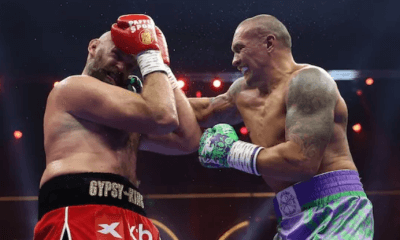
 Featured Articles2 weeks ago
Featured Articles2 weeks agoBoxing Notes and Nuggets from Thomas Hauser
-
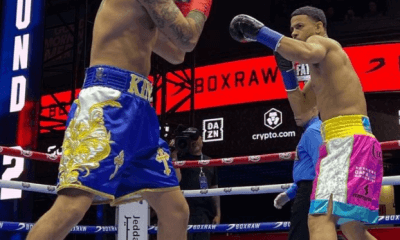
 Featured Articles4 weeks ago
Featured Articles4 weeks agoRolly Romero Upsets Ryan Garcia in the Finale of a Times Square Tripleheader
-
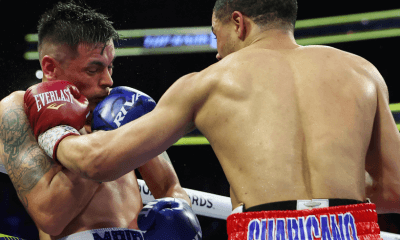
 Featured Articles4 weeks ago
Featured Articles4 weeks agoUndercard Results and Recaps from the Inoue-Cardenas Show in Las Vegas
-
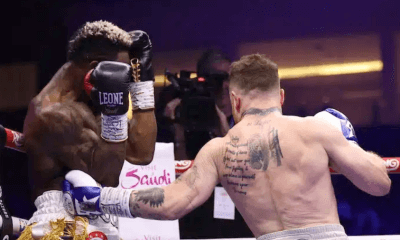
 Featured Articles4 weeks ago
Featured Articles4 weeks agoCanelo Alvarez Upends Dancing Machine William Scull in Saudi Arabia
-
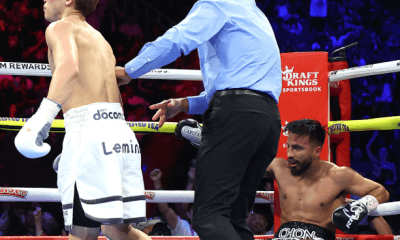
 Featured Articles4 weeks ago
Featured Articles4 weeks agoBombs Away in Las Vegas where Inoue and Espinoza Scored Smashing Triumphs
-
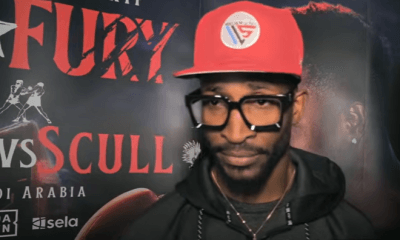
 Featured Articles4 weeks ago
Featured Articles4 weeks agoArne’s Almanac: The Good, the Bad, and the (Mostly) Ugly; a Weekend Boxing Recap and More
-
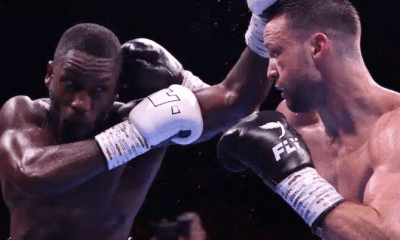
 Featured Articles1 week ago
Featured Articles1 week agoEkow Essuman Upsets Josh Taylor and Moses Itauma Blasts Out Mike Balogun in Glasgow




















1 Comment